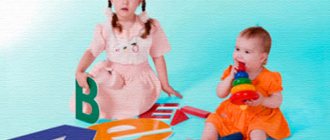Causes
Different forms of rhinolalia are provoked by different causes, affecting both at the stage of intrauterine development and after birth. Sound pronunciation disorder is a consequence of certain features or damage to the speech organs.
Organic rhinolalia
The organic form of the congenital type of disease occurs in the following cases:
- infection of a pregnant woman in the early stages with influenza, toxoplasmosis, mumps, rubella and other infections;
- contact with pesticides;
- smoking;
- alcohol and drug use;
- stress;
- the presence of endocrine disorders.
The formation of facial clefts occurs at 7-8 weeks of pregnancy.
Acquired organic open rhinolalia occurs as a result of diseases or injuries that reduce the patient’s speech capabilities, including partial paralysis (paresis) of the soft palate, perforation of the palate due to mechanical trauma, scars on the palate, in the nasopharynx, in the throat, paralysis.
Acquired organic closed rhinolalia occurs with various anatomical changes in the nasopharynx or nose:
- anterior – curvature of the nasal septum, polyps, tumor in the nasal cavity, hypertrophy of the mucous membrane;
- posterior – polyps, adenoids, fibromas of the nasopharynx, enlargement of the unpaired pharyngeal tonsil.
Functional rhinolalia
Functional rhinolalia can be open or closed. The causes of the disease (in the acquired, open form) are post-diphtheria paresis (that is, partial paralysis) of the soft palate, which loses the ability to move, and removal of the adenoids; the causes of the closed form are adenoidectomy, neurological disorders, copying the nasality of others.
Types of changes in sound pronunciation
Forms of rhinolalia are divided into three main types:
- Open.
- Closed.
- Mixed.
Open form of rhinolalia - air passes through the nasal cavity, as if the passage is open, as a result of this, sounds are pronounced with nasal impact.
The closed form of rhinolalia is characterized by the fact that the passage into the nasal cavity is constantly difficult, sounds are pronounced in the same way as with a severe runny nose, rather muffled.
The mixed form of rhinolalia combines and combines the previous types of rhinolalia.
Open and closed rhinolalia can be determined at home using a mirror. The mirror is brought to the nose and sounds are made.
When using words without nasal sounds, the glass will fog up when the rhinolalia is open, words with nasal sounds will cause the glass to fog up when the nasality is closed.
Closed rhinolalia
Also known as rhinophony. Sound comes out exclusively through the mouth, even with nasal sounds. The closed form of rhinolalia appears with defects of the nasopharynx and nasal cavity. Possible diseases: hypertrophy of the nasal mucosa or soft palate.
With the closed form of rhinolalia, there is a violation of phonemic sounds. [M] is heard as [b], and [n] as [d].
The classification of closed rhinolalia is divided into two types:
- Organic.
- Functional.
Closed organic rhinolalia is a sign of defects in the pharynx, nose and nasopharynx. It can be observed with polyps in the nose, as well as with a profuse runny nose. A deviated nasal septum can also be a cause.
Functional closed form of rhinolalia. This type affects children who are prone to colds and allergic reactions. The nasal passages are still quite narrow, and often a stuffy nose leads to “habitual” rhinophony.
A child gets used to using a nasal sound during illness and continues to imitate those sounds. The structure of the speech defect here lies solely in habit, but the timbre can be disrupted much more than with organic closed rhinolalia.
Open rhinolalia
The open form of rhinolalia can be congenital. With this disorder, the child’s tongue is in an unnatural position, as if it is being pulled back. The root of the tongue in such children is strong and protrudes upward, but the tip of the tongue is poorly developed and inactive. This structure also causes feeding problems.
The soft palate also does not work properly. It takes a sluggish part in important activities: chewing, swallowing, and also disrupts phonation.
Children with such disorders begin to speak very late and have difficulty, severely distorting their words.
Also, due to hearing impairment and defective articulation, the open form of rhinolalia leaves its mark on hearing. Children do not hear individual sounds, it is difficult for them to master all the lexical intricacies of speech, which results in GSD (general speech underdevelopment).
With open rhinolalia, there are disturbances in sound pronunciation [p], [t], [d], [v], [f], [l] and [r].
Open organic rhinolalia can be not only congenital, but also acquired.
Acquired rhinolalia can appear after injuries, bruises, burns of the throat, surgical removal of the tonsils, and other operations on the throat (tumors, polyps).
As a result, you may see:
- scars of the soft palate;
- paresis, paralysis;
- fistulas, clefts.
The mechanism of pronunciation of words changes, as the soft palate will lag behind the posterior pharyngeal wall, where a gap is formed. The soft palate can no longer act as a valve and block the air, so air enters the nasal cavity.
There is another type - functional open rhinolalia. This form occurs during hysteria. This is a temporary “nasality” that appears during hysterical attacks.
Also, functional rhinolalia sometimes occurs after healing of organic open rhinolalia. This happens due to the habit of the soft palate not to work, but to be in a lowered state. This form is less common and can be treated with a course of sessions with a speech therapist.
However, congenital rhinolalia is not so easy to eradicate; it will be necessary to resort to surgical intervention.
There are two types of correction for this disease:
- Cheiloplasty is an operation that restores the upper lip.
- Uranoplasty - restoration of the bottom of the nasal septum.
Surgeries are recommended even for newborn children, provided that they have no contraindications, which are discussed in detail with the attending physician.
The operation is contraindicated for children with anemia, intrauterine malnutrition, asphyxia, congenital heart disease and other serious diseases.
Uranoplasty is divided into two categories: gentle and radical. If gentle treatment can be carried out from one and a half years, then radical treatment, which is more successful for complete healing, will need to wait for at least three years.
Limberg invented a special method of uranoplasty, which is recognized as most effective for the “cleft palate” (congenital cleft of the hard and soft palate).
Mixed rhinolalia
Authors such as Zeeman and Mitronovich-Modrzejewska identify a separate type - a mixed type of rhinolalia.
It manifests itself as a combination of two components:
- decreased nasal resonance with nasal sounds;
- nasal timbre.
It turns out that the mixed form develops with insufficient activity of the palate (shortened soft palate) and nasal obstruction.
Symptoms
The types of rhinolalia can be distinguished even in the prelinguistic period; as a rule, making a diagnosis is not difficult. The organic open form appears as follows:
- when feeding, food, breast milk, and formula flow out through the baby’s nose;
- air entering directly into the lower respiratory tract due to cracks (cool air causes bronchitis, otitis, pneumonia, eustachitis, malnutrition);
- the presence of weak intelligence - mental retardation, mental retardation, nystagmus, ptosis, hyperreflexia;
- abnormal prelinguistic period: absence of babbling, silent articulation of sounds;
- delayed speech development;
- speech that is incomprehensible to others;
- most of the consonants resemble the sound [x] due to the fact that the root of the tongue is raised, and the tip is lowered and passive;
- pronounced nasality, dull quiet voice;
- disorders of written speech in the form of dyslexia and dysgraphia;
- insufficient development of vocabulary;
- at the onset of conscious age - shyness, fear of communication.
Closed organic rhinolalia is distinguished by disturbances in the articulation of sounds and the pronunciation of nasal sounds [m], [m'], [n], [n'], as well as the replacement of [n] with [d] and [m] with [b]. Nasal breathing is difficult or impossible, which directly affects the timbre of the voice.
The functional open form is characterized by incorrect sound pronunciation of vowels, while consonants are produced well. Functional closed rhinolalia is characterized by an unnatural and dull voice without emotion.
Causes of rhinolalia
The pathogenesis of the disease lies in the improper interaction between the nasal cavity and the oropharynx. This causes the air to flow in the wrong direction during the formation of sounds, causing the pronunciation to be distorted.
Violation of voice timbre and sound pronunciation can be primary or acquired - in each case, the predisposing factors will be different.
The causes of the congenital form of the disease are presented:
- violation of the integrity of the soft or hard palate, which in the medical field is called “cleft palate” syndrome;
- cleft jaw or upper lip - this disorder is commonly known as “cleft lip”;
- defects of the soft palate, namely its shortening;
- pathologies of the small tongue - this includes its complete absence or, conversely, bifurcation;
- clefts of the hard palate, which are hidden.
Causes of rhinolalia.
In addition, severe illnesses suffered by a woman during pregnancy in the first trimester can cause primary rhinolalia. These diseases include:
- toxoplasmosis and rubella;
- parotitis;
- influenza and other infectious processes.
An important role in the occurrence of such a disorder of speech function is also played by:
- exposure to toxic substances on the body of a pregnant woman;
- the expectant mother's addiction to drugs, alcohol or nicotine - not all female representatives, having learned that they are expecting a child, consider it necessary to get rid of addictions;
- frequent stressful situations to which pregnant women are exposed;
- the occurrence of endocrine disorders before or during pregnancy.
It is worth noting that the above defects that provoke the occurrence of rhinolalia are formed in the fetus in the early stages of intrauterine development, namely in the seventh or eighth week.
It is also believed that burdened heredity plays an important role. There is a high probability of a child developing such a speech disorder if one of the parents has:
- cleft lip or palate;
- asymmetry of the tip of the nose;
- asymmetry of the wings of the nose.
The mechanisms of development of acquired rhinolalia will be dictated by the type of disease. For example, the development of secondary open organic rhinolalia will be promoted by:
- cicatricial deformations of the palate;
- conditions such as paralysis or paresis of the soft palate;
- compression by the tumor of nerves such as the vagus and glossopharyngeal.
Open functional acquired rhinolalia develops against the background of:
- previous intervention for excision of adenoids;
- paresis of the soft palate caused by diphtheria.
Closed rhinolalia of an organic nature often occurs due to a wide range of anatomical changes in the nose or nasopharynx. It follows from this that the sources can be
- curvature of the septum located in the nasal cavity;
- the appearance of benign neoplasms or polyps;
- hypertrophy of the nasal mucosa;
- malignant tumors in the nose;
- formation of an unpaired tonsil.
The functional form of closed rhinolalia is represented by such an etiological factor as high tone of the soft palate. This condition is expressed in the fact that a full flow of air through the nose is impossible. This violation may occur due to:
- adenoidectomy, i.e. surgery to excise the adenoids;
- various deviations of neurological origin;
- banal copying of the nasal speech of surrounding people.
Diagnosis of the disease
The examination is carried out by several doctors in stages, after which a treatment plan is formed. A child with this disease visits a speech therapist, speech pathologist, psychologist, phoniatrist, neurologist, as well as specialists who must develop a plan for the preparatory stage to correct the defect - otolaryngologist, orthodontist, maxillofacial surgeon.
Diagnosis is divided into 2 stages - medical and examination of oral speech. For the purpose of medical diagnosis of palatolalia and other abnormalities, rhinoscopy, pharyngoscopy, radiography, electromyography and other studies are used.
During a speech therapy study, the following tests are performed:
- Gutzmann test;
- study of the sound pronunciation of vowels and consonants;
- study of phonemic processes;
- study of the prosodic side of speech;
- Check reading and writing status.
The comprehensive result of the diagnosis is a treatment plan and a plan for corrective work with a speech therapist.
Prevention and prognosis
Specific preventive measures to prevent the development of rhinolalia include:
- maintaining a healthy lifestyle while bearing a child;
- avoiding severe infectious diseases during pregnancy;
- timely elimination of anatomical defects in children;
- full training of the baby in the correct pronunciation of sounds;
- prevention of maxillofacial injuries in children and hypothermia of the child’s body;
- Regular visits to a speech therapist are necessary to monitor the correct development of speech.
The prognosis for different types of illness will differ. With the functional type of rhinolalia, the outcome in the vast majority of cases is favorable and directly depends on the professionalism of the speech therapist. As for organic rhinolalia, everything depends on the success of surgical intervention and the early start of corrective work with a speech therapist.
Rhinolalia in children - symptoms and treatment, photos and videos
What to do?
If you think you have Rhinolalia
and symptoms characteristic of this disease, then a speech therapist can help you.
Source
Did you like the article? Share with friends on social networks:
Defect correction
Speech therapy correction of rhinolalia is impossible without eliminating the defect of the speech apparatus, so the surgeon first gets involved. There are several ways to correct palatolalia and other deficiencies:
- production of pharyngeal obturator;
- uranoplasty;
- cheiloplasty;
- velopharyngoplasty;
- nasal polypotomy;
- removal of tumors;
- Septoplasty.
Success cannot be achieved with surgery alone; it requires the hard work of psychotherapists and high-quality speech therapy correction. During the work of a speech therapist, attention should also be paid to physical therapy to achieve results as quickly as possible. In case of a closed/open form of the disease, it will not hurt to perform the exercises boa constrictor, metronome, clock, vine, needle, takeoff and landing, etc.
For example, palatolalia is treated with great success surgically, as well as persistent speech therapy work both before and after surgery. Before surgery, it is important to automate those sounds that are available, develop vocabulary, increase confidence, develop vocal strength, and develop phonemic awareness. After surgery, it is necessary to adapt to new conditions and put previously learned skills into the new nasopharynx. At this stage, many techniques are used:
- production of oral and nasal exhalation (independent of each other);
- elimination of nasal tone;
- development of velopharyngeal closure;
- massage of scars after surgery;
- learning to correctly compose phrases and sentences.
Treatment prognosis
Functional rhinolalia has a favorable prognosis - speech therapy sessions are quite enough to alleviate all the deficiencies. The organic form of the disease is much more difficult to eliminate; everything depends on the quality of the operation and the completeness, timeliness, and complexity of psychological and speech therapy assistance.
Prevention of this defect lies in the timely treatment of all problems associated with the nasopharynx, and the identification and elimination of functional disorders of the speech apparatus.
To schedule an initial consultation and develop a diagnostic plan, call us or fill out the form on the website. Our network of clinics employs experienced doctors of all categories and operates operating rooms to provide a comprehensive solution to the problem in children of any age. We will develop a treatment plan at an affordable price and provide high-quality speech therapy and psychological support for your child.








